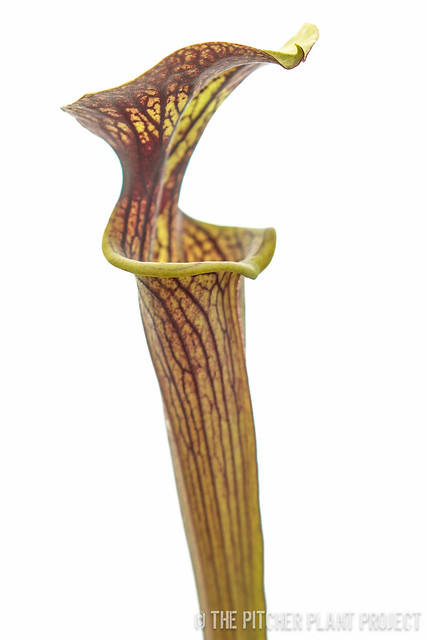Gone. But not forgotten. The era of this grand Drosophyllum has come to an end. I received a small plant in 2009 from Mike Wang, and the thing eventually grew into a colossal beast. As you can see in the skeleton below, the main trunk got as thick as my thumb. I started noticing a decline last month – and now it’s gone. No biggie though, it happens. I miss this plant though, that’s for sure.
 End of an era.
End of an era.

Yeah, the thing was a beast. the photo to the left was taken in July, 2011. This was taken just before it started branching out like crazy and eventually, the weight of it all made it spill over the edge of the pot. I really never expected that I would of been able to grow this plant to this size.
Knowing what I know now, I think that I’ll get a bigger pot for these monsters to grow in next time. When I first received the plant from Mike, it was still growing in a 3 inch plastic pot. It was a young plant at the time. I was able to transplant that plant into a larger terra cotta pot. Yes, it’s possible — but you have to be very careful not to disturb the root system. I basically just slid that dirt brick out of the small 3 inch pot and carefully potted it up all nice and happy in it’s new home.

It eventually turned into this crazy muti-headed honey smelling hydra. See photo to the right taken last year in the fall. Not sure exactly what caused the crash. It could of just been age? It has been said that the plants can flower themselves to death. I have been quite cautious with the flowering part and limited the flowering by trimming off most (not all) of the flower buds/stalks. I suspect that it may of had to do with the roots? In previous years, I’ve kept the plant a little bit on the dryer side during winters, only watering occasionally. Perhaps missing a watering with an overly root bound base may of stressed the plant. Who knows. After yanking the trunk out of the pot, I decided to do an autopsy and look at the root system. In the photo below, you’ll see the black roots running all throughout the pot, and looking somewhat cramped at the bottom.
 Cramped.
Cramped.
Above you can see the roots all packed in pretty tight. The mix I used was a pretty rocky/quick draining one. At the very bottom of the pot, I used a thin layer of long fiber sphagnum moss. This was to prevent the media from spilling out of the hole at the bottom of the pot. The rest of the potting mix consisted of a coarse grade horticultural sand, perlite, pumice, a handful of peat moss, and some APS (Aquatic Plant Soil). I can’t remember the exact ratios, but I just mixed it until I felt the media was “happy” enough. I guess.
This Drosophyllum is now gone, but like I mentioned – not forgotten. I’ve had success with cuttings with this plant – it takes a long time but I managed to get roots on a couple of those rejected flower stalks, or random branches I felt like lopping off. Those did not survive all of the moves last year, but genetic representations of this badass plant are still alive and well. Kinda. In my fridge. In the form of seeds. (Ok, now cue the Circle of Life…)
 There are tiny beasts locked up in the shells.
There are tiny beasts locked up in the shells.

 S. ‘Black Widow’ x flava v. ornata
S. ‘Black Widow’ x flava v. ornata



 End of an era.
End of an era.

 Cramped.
Cramped. There are tiny beasts locked up in the shells.
There are tiny beasts locked up in the shells.







